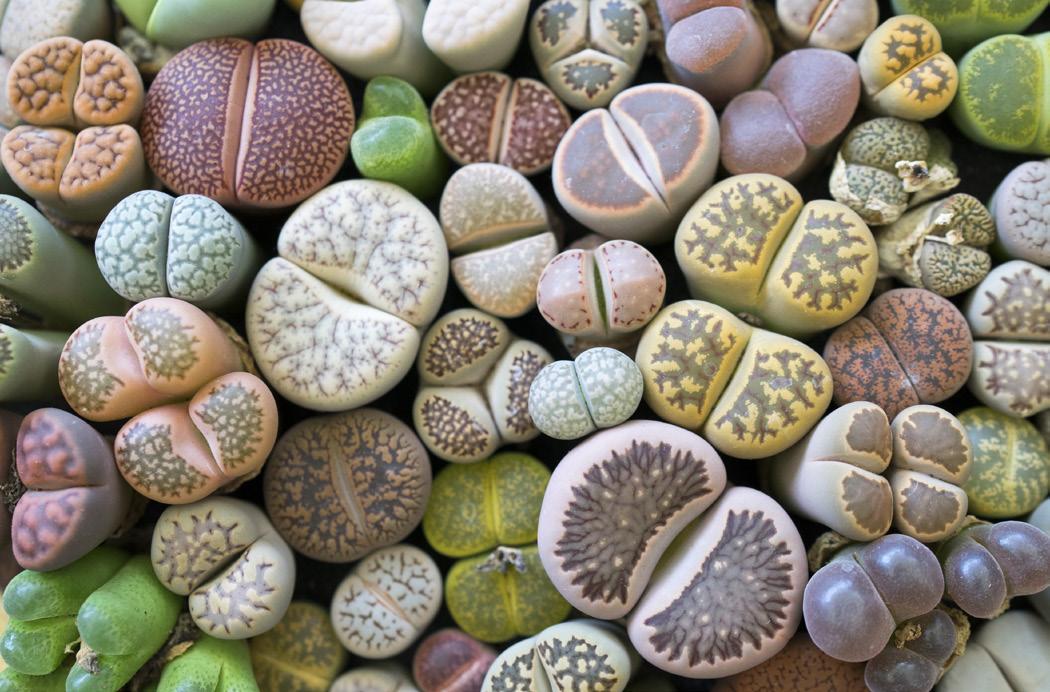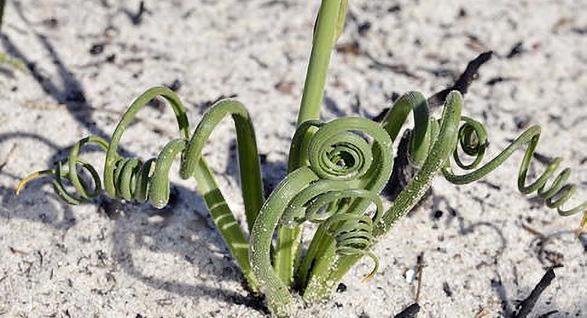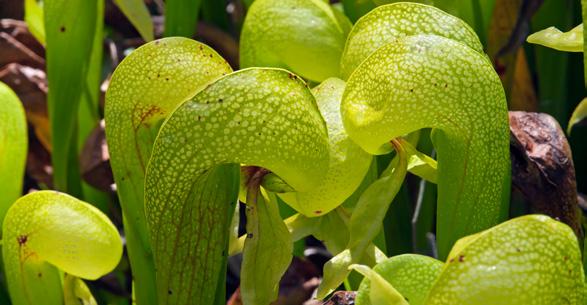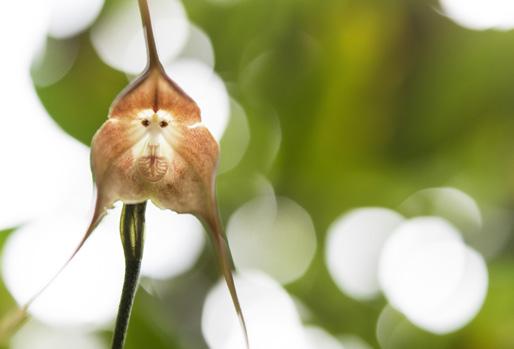
5 minute read
WEIRD BUT PERFECTLY NATURAL!
• BY VALÉRIE LEVÉE
Water, light, CO 2 , minerals—that’s essentially all a plant needs to grow. As these resources are found in ecosystems in varying amounts, plants have to capture as much of them as they can and use them efficiently. But that’s not the whole story: they also have to reproduce. And for that, they sometimes need pollinators, which they try to attract in all kinds of ways.
Over the course of evolution, these challenges have fostered the development in plants of numerous adaptations that have helped them to survive in their environments. Solutions to these challenges have emerged through random genetic mutations, sometimes leading to seemingly strange characteristics. Here’s an anthology of plant oddities.
PLANTS OR PEBBLES?
If you go to South Africa or Namibia, careful where you walk. What looks like a pebble to you could be a plant!
In arid environments, living beings have to protect themselves from heat and drought. That’s what “living stones” or lithops do; lithops literally means “stony appearance.” These “pebbles” are actually leaves.
A lithops plant consists of two cone-shaped leaves that face each other. The two leaves, like those of other succulent plants, store water, but they’re also partly buried. That’s how they shield themselves from the heat of the day (as high as 70°C) and the cold of the night (as low as 0°C). Being partially buried also protects them from herbivores!
When fall arrives and conditions are favourable, a colorful flower emerges from between the two leaves, giving away the true plant nature of these unusual stones.
CURLING TO CATCH DEW
A fog desert on the coast of South Africa is home to strange plants with curly-whirly leaves. One of them is Albuca spiralis, or corkscrew albuca. What makes the leaves curl up is not the humidity of the mist, but rather the need to adapt to a desert environment. Over the course of evolution, the environmental conditions have favoured the natural selection of a leaf shape that is optimal for collecting as much water as possible from the mist and dew. In the desert where corkscrew albuca grows, the mist from the sea sometimes gets carried inland, bringing its share of water droplets. The relative humidity, which in this case can reach 85%, is deposited in the early hours in the form of dew. It turns out that the edges of the leaf catch dew and droplets better than the leaf blade. In a desert-like environment, these narrow leaves also have the advantage of being less exposed to the air, which limits the loss of water through transpiration. The leaves form a channel that carries the captured water to the base of the plant, keeping the soil there humid.
Many plants that grow in this region are curly, frizzled or spiralled. In this environment, it’s perfectly normal!

Albuca spiralis
PHOTO Richard Adcock

Darlingtonia californica
PHOTO Shutterstock/pr2is
GULPING DOWN MINERALS
In bogs and marshes, plants don’t lack water, but they sometimes lack minerals. Now, it so happens that insects are a good source of minerals, but plants have to catch them first.
That’s what Darlingtonia californica does, a carnivorous plant that grows in northern California and Oregon, also called cobra plant. It takes its name from the fact that the ends of its tubular leaves look like a rearing cobra. But besides evoking a cobra, the leaves serve as insect traps. With their bright colours and glands that secrete nectar, they attract insects to the opening of the tube located just below the “head of the cobra.” To get out of the trap, insects try to move toward the light. The cells of the top of the “cobra head” are translucent and let light through. So, insects make for the light, run into the top of the “cobra head,” slide down the very slippery sides of the leaf and fall into the bottom of the tube. Downward-pointing hairs prevent the insects from climbing back out of the tube. They eventually end up drowning in a digestive liquid, from which Darlingtonia californica takes the nitrogen it needs.
Many carnivorous plants have a similar survival strategy: attract, capture and digest prey to obtain precious nutrients not otherwise available in a nutrient-poor habitat. And they achieve this thanks to quite extraordinary modified leaves.
ADAPTED TRANSPORT OF POLLEN
Among flowering plants, exchanging pollen helps to mix genes between individuals and create genetic variability as a basis for natural selection. Some plants are pollinated by the wind, but that makes the transport of pollen very haphazard. Orchids benefit from a form of adapted transport of pollen, provided by insects.
One remarkable example is Ophrys bombyx, the bumblebee orchid, which, besides looking like a female bee, also gives off a similar smell. That is enough to attract a male bee, which, if it has already visited another bumblebee orchid, will bring along its pollen.
The lady’s-slipper orchid also attracts bees with its fragrance. Better still, it gets them to fall into the trap formed by a slippershaped petal. To get out of the trap, the bee has to rub its back against the pollen, which it will then take away and deposit on another orchid.
As their names suggest, the monkey orchid has what looks like a monkey face, and the flying duck orchid looks like a duck. But don’t go thinking that they’re pollinated by a monkey or a duck. The names simply refer to likenesses people have seen in the plants. In these cases, too, the flowers are pollinated by insects!
Curly leaves, carnivory, traps, unusual transportation of pollen—these are all shapes or strategies that allow plants to grow and reproduce in specific, sometimes inhospitable habitats. While these extraordinary adaptations may, at first sight, seem ridiculous, bizarre or frivolous, for the plants they are real guarantees of survival. Ultimately, they are strange only in our eyes.

A monkey orchid
PHOTO Shutterstock/Mitotico
THE ODD PLANTS OF Mrs Z, Jardin botanique, February 26 — April 26










